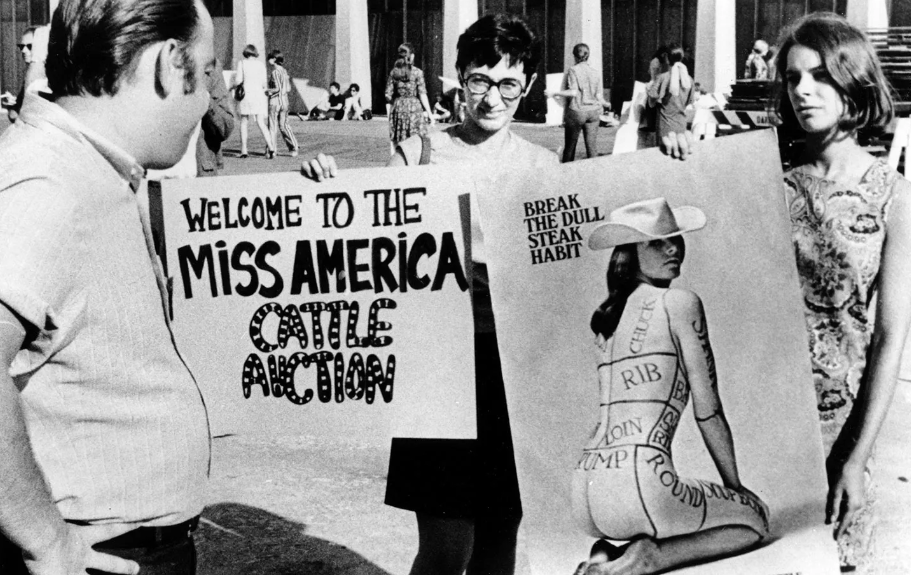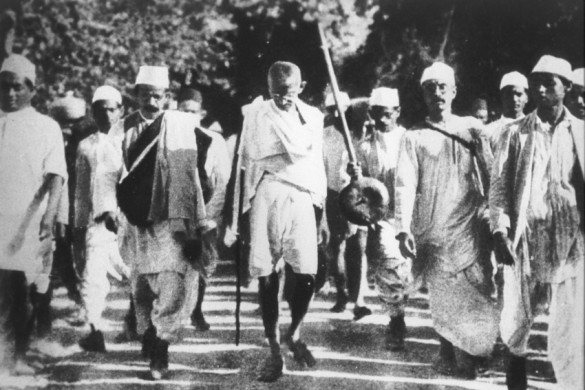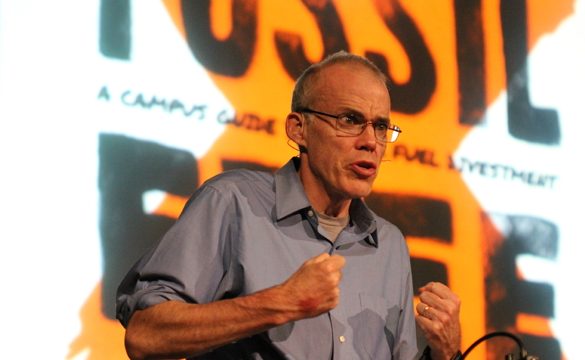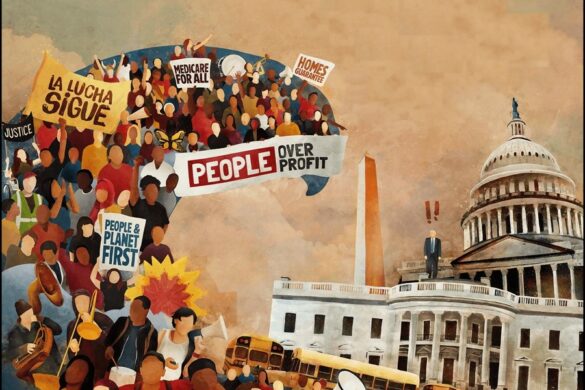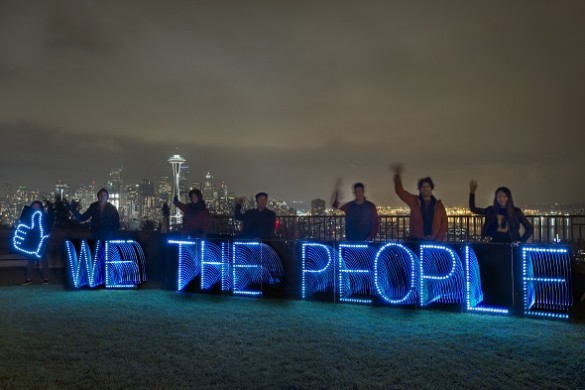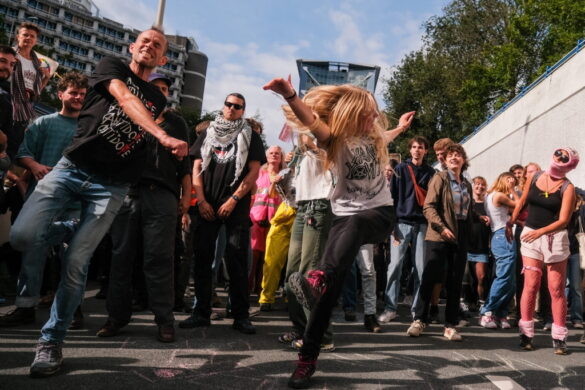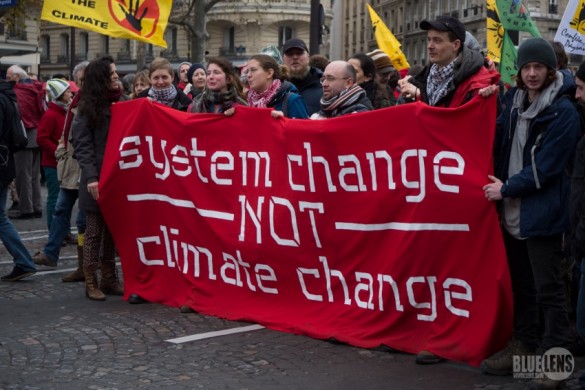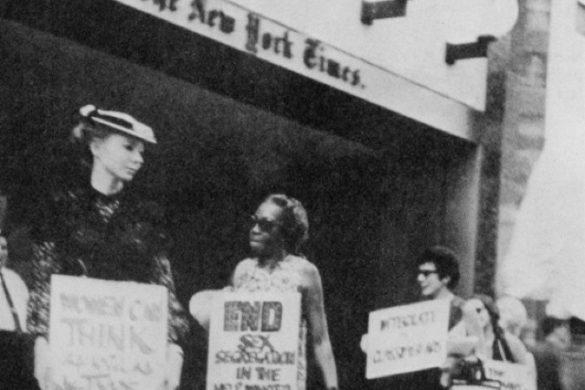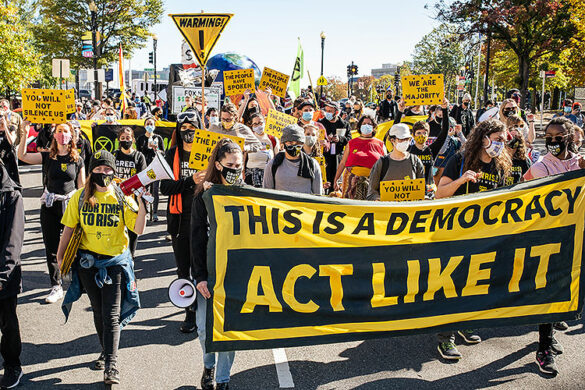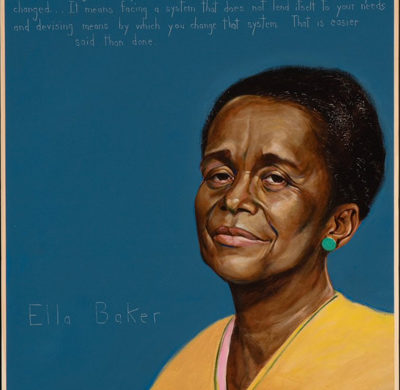A bold and irreverent protest 50 years ago put a renewed women’s liberation movement on the public map—and offers important lessons for today’s resistance.
By Laura Tanenbaum and Mark Engler
(Published on August 7, 2018 in The Nation)
On September 7, 1968, more than a hundred women gathered to protest on the boardwalk
of Atlantic City, New Jersey. Organized by a recently formed group called New York
Radical Women, the demonstration targeted an annual televised event, which, the women
argued, served as a potent symbol of the country’s entrenched sexism: the Miss America
beauty pageant. With a day of street theater, they announced the arrival of a new, more
militant women’s movement—one with renewed significance in the #MeToo era.
On the boardwalk, women marched with signs reading, “Can makeup cover the wounds
of our oppression?” and “If you want meat, go the butcher.” One group crowned a live
sheep the winner of the beauty contest, while another auctioned off a lanky, blonde Miss
America effigy (“Step right up! How much am I offered for this number one piece of
prime American property?! She sings in the kitchen, hums at the typewriter, purrs in
bed!”). In another act, the participants threw “symbols of oppression”—including girdles,
high heels, and hair curlers—into a bin dubbed the Freedom Trashcan. (Contrary to the
bra-burning myth invented by the media as a result of the event, no undergarments were
actually incinerated.)
Finally, a small group acquired tickets and infiltrated the hall, briefly disrupting the
pageant by unfurling a banner that read “Women’s Liberation” and chanting during one
of the televised speeches. “It was the most wonderful celebratory mood,” Peggy Dobbins,
one of the participants, said recently. “We knew we were on the right track.”
The protest became national news, catapulting the era’s new wave of feminist activism
into public consciousness. As Carol Hanisch later recounted, “When we read the morning
papers, we knew our immediate goal had been accomplished: Alongside the headline of a
new Miss America being crowned was the news that a Women’s Liberation Movement
was afoot in the land and that it was going to demand a whole lot more than ‘equal pay
for equal work.’ We were deluged with letters, more than our small group could possibly
answer, many passionately saying ‘I’ve been waiting all my life for something like this to
come along.’”
Fifty years later—when we are governed by an alleged rapist who once owned a rival
beauty pageant—the protest remains all-too relevant. It offers important lessons not only
for those who, in the wake of #MeToo, are organizing against misogyny and harassment,
but for all who seek to understand how social movements can effectively build resistance
today.
A Perfect Symbol of Oppression
A first lesson is that a well-chosen, symbolically rich target can help provoke the kind of
cultural shifts that lay the groundwork for widespread change.
At the time of the demonstration, Miss America protesters had to push back against
fellow activists and members of the public who saw their energies as misspent. “Some
male reactionaries in the Left still think Women’s Liberation ‘frivolous’ in the face of
‘larger, more important’ revolutionary problems,” writer and activist Robin Morgan
wrote shortly after the event. Moreover, some questioned why a pageant should be a
focus of dissent. After all, by expressing their disdain for the event, the protesters would
win no legal or legislative changes.
The members of New York Radical Women, however, recognized the pageant’s potency
as a cultural icon. “Everybody tuned into Miss America back them—this was like the
Oscars,” one of the protesters, Alix Kates Shulman, remembered. Hanisch, one of the
main organizers, further explained, “Here was this American icon—the Miss America
Pageant—telling women what to look like, what to wear, how to wear it, how to walk,
how to speak, what to say (and what not to say) to be considered attractive.”
Speaking on a talk show after the protest, activist Rosalyn Baxendall remarked, “Every
day in a woman’s life is a walking Miss America contest.”
Going after Miss America, moreover, allowed the radicals to draw connections between
issues. In their press release, they pointed out how the pageant propped up consumerism
(“Miss America is a walking commercial for the pageant’s sponsors. Wind her up and she
plugs your product…”) and war (“last year she went to Vietnam to pep-talk our
husbands, fathers, sons and boyfriends into dying and killing with a better spirit…). They
also decried the historical exclusion of nonwhite women from the pageant and the racism
of the beauty standards it upheld, an issue that the legendary African-American activist
and lawyer Flo Kennedy fought to get on the New York Radical Women’s agenda.
The protest helped trigger a torrent of organizing and consciousness-raising. This wave of
activity, in turn, helped produce substantial reforms—in reproductive rights, equal access
to education, and employment equality, among other areas. The era’s radicals also
established the analytical framework for the concept of sexual harassment, seeing it, like
the pageant, as less about sex than about power and the desire to keep women in their
place.
Like the pageant protest, the most profound impact of the #MeToo movement may have
less to do with its effect on any one specific target than with its ability to usher in a
cultural reckoning. #MeToo has sometimes been discussed in narrow, legalistic terms, as
seeking to hold specific men in high-level positions accountable for improper and
sometimes criminal behavior. But its more radical implications come from identifying the
power of patriarchy across a range of institutions—connecting the behaviors of notorious
harassers with the types of pervasive and persistent sexism that prevail across workplaces
and highlighting the routine abuses faced by workers ranging from hotel housekeepers to
restaurant servers to journalists to graduate students. Some of the most promising
organizing is going beyond the naming abusers and toward creating spaces where those
affected can share stories, build solidarity, and develop collective strategies for action.
For example, the Coalition of Immokalee Workers, a worker-based human-rights
organization, has made political education about sexual harassment a priority among its
members, helping male workers see the importance of the issue and understand it as
linked with other workplace concerns. As a result, they are including protections against
harassment in the agreements they are brokering with restaurants chains.
It’s About More Than Numbers
A second lesson is that the design and drama of a social movement action can be more
important that sheer numbers of participants. Most activists who were present estimate
that perhaps 200 women took part in the Miss America protest, a modest number.
Yet the action was planned as a boisterous and theatrical affair designed to engage the
public—what activists at the time called a “zap.” Further feminist zaps would be
deployed when many of the same women went on to form the group WITCH, which
famously put a hex on Wall Street on Halloween of 1968. Similar guerrilla-theater tactics
were later used to great effect in the 1980s by HIV/AIDS activists who came together in
ACT UP.
Not only were these actions catchy and entertaining; they were disruptive, with
participants risking arrest and professional sanction. In the case of the Miss America
protest, Dobbins was arrested and charged with “emitting a noxious odor” after spraying
Toni Home Permanent in the aisles of the Convention Hall. The hair-product brand was a
pageant sponsor and infamous among women for its pungent smell. “The corporate
sponsorship of women’s oppression stank then,” Dobbins said recently, “and it stinks
still.”
The action was also helped by a savvy media strategy. The protest’s press release
advised, “We reject patronizing reportage. Only newswomen will be recognized.” And
the participants held to their word, with lasting result: Female journalists at the time were
often restricted to the society pages or a few other limited beats. By insisting on speaking
only to women, feminists not only garnered more sympathetic coverage, they helped
these reporters get a wider range of assignments.
The 2017 Women’s March—held the weekend of Trump’s inauguration—succeeded in
becoming the largest single-day demonstration in US history. Yet not every action will be
so well-attended, and activists should not be stuck seeking ever-larger numbers. The
willingness of small groups to take on higher-risk actions, smartly conceived, can expand
a movement’s tactical repertoire.
Certainly, the media strategies of 50 years ago, while shrewd in their time, must be
adapted for relevance in a saturated news environment that has been transformed by
Twitter, Facebook, and Instagram. #MeToo, like #Occupy and #BlackLivesMatter before
it, showed that social media can effectively be used to highlight events that might
otherwise be underreported. Moreover, while mainstream media are often ill equipped to
understand social movements and tend to favor stories about powerful individuals, the
creative use of alternative media can elevate a wider range of voices and galvanize people
who begin to realize how pervasive an issue is in their communities.
The Personal Is Still Political
While the Miss America demonstration was aimed at engaging a broad public, it existed
within a movement that incorporated different approaches to effecting change, including
consciousness-raising, direct action, institutional lobbying, organizing, and the creation
of alternative institutions. And this is a last important lesson of the protest: that different
methods of movement building can complement and enhance one another.
Consciousness-raising—a term attributed to Kathie Sarachild, a member of New York
Radical Women and one of the pageant protest’s organizers—is one of the most well-
known and misunderstood tactics of the radical-feminist movement. Rooted in the idea
that the “personal is political,” it is a process through which groups of women would
describe their experiences and make connections to the wider political context. Women
joining the movement and participating in these sessions quickly recognized that troubles
they had perceived as individual problems were widely shared—and rooted in social,
political, and economic structures that were working to their disadvantage.
But consciousness-raising, which is still effectively used by organizers today, was never
meant to end with personal insight or group bonding. Rather, the originators of the
practice intended it to fuel protest and organizing campaigns that would be connected to
the lived experiences of oppression. Indeed, as Hanisch explained, “The idea for the Miss
America protest came out of group consciousness-raising in New York Radical Women.
We had discussed how we were all pressured to act and look in certain ways which we
found limiting, uncomfortable, and oppressive.” After reflecting on their experiences
watching the pageant, the feminists realized the event’s power—and this led directly to
the plan for action. “The protest was so successful because we had struck a chord in most
women’s lives by understanding our own,” Hanisch said.
Just as personal transformation can motivate public action, attention-grabbing zaps and
mass mobilizations can encourage organizing and the creation of lasting alternative
institutions. “The week before the [Miss America] demonstration there had been 30
women at the New York Radical Women meeting,” Robin Morgan reported; “the week
after, there were approximately a 150.” Hanisch argued that the national press also led to
a flowering of local organizations elsewhere, giving women “the nudge they needed to
form their own groups. They no longer felt so alone and isolated.”
Of course, the process of building a multi-pronged movement did not always go
smoothly. Feminist groups struggled to absorb the flood of new recruits. They
experienced schisms and internal strife; New York Radical Women itself split within six
months of the Miss America action. And, as feminist scholars such as Alice Echols and
Jo Freeman have detailed, small groups could grow inward-looking and “encapsulated,”
more preoccupied with their own communities than with changing dominant structures.
Yet in spite of these challenges, the organizing that followed the 1968 protest made a
serious impact, both in terms of policy and the creation of institutions—including
feminist presses and book stores, women’s-studies programs, rape-crisis centers,
women’s-health clinics, battered-women’s shelters, and cooperative daycare
centers—which altered the cultural climate for years after the movement’s period of peak
visibility.
#MeToo has once again demonstrated the power that can be unleashed when shared
personal experience becomes an insistent and undeniable demand for social change. The
task now is to connect this awareness of injustice with public mobilization and sustained
organizing. For if the Miss America protest shows nothing else, it is that few things are as
transformative as the experience of collective action. “I don’t ever remember feeling that
powerful up to that point,” participant Bev Grant said. “Because it was all women. And
there was just this sense of, ‘Oh my God, look what we can do.’”

